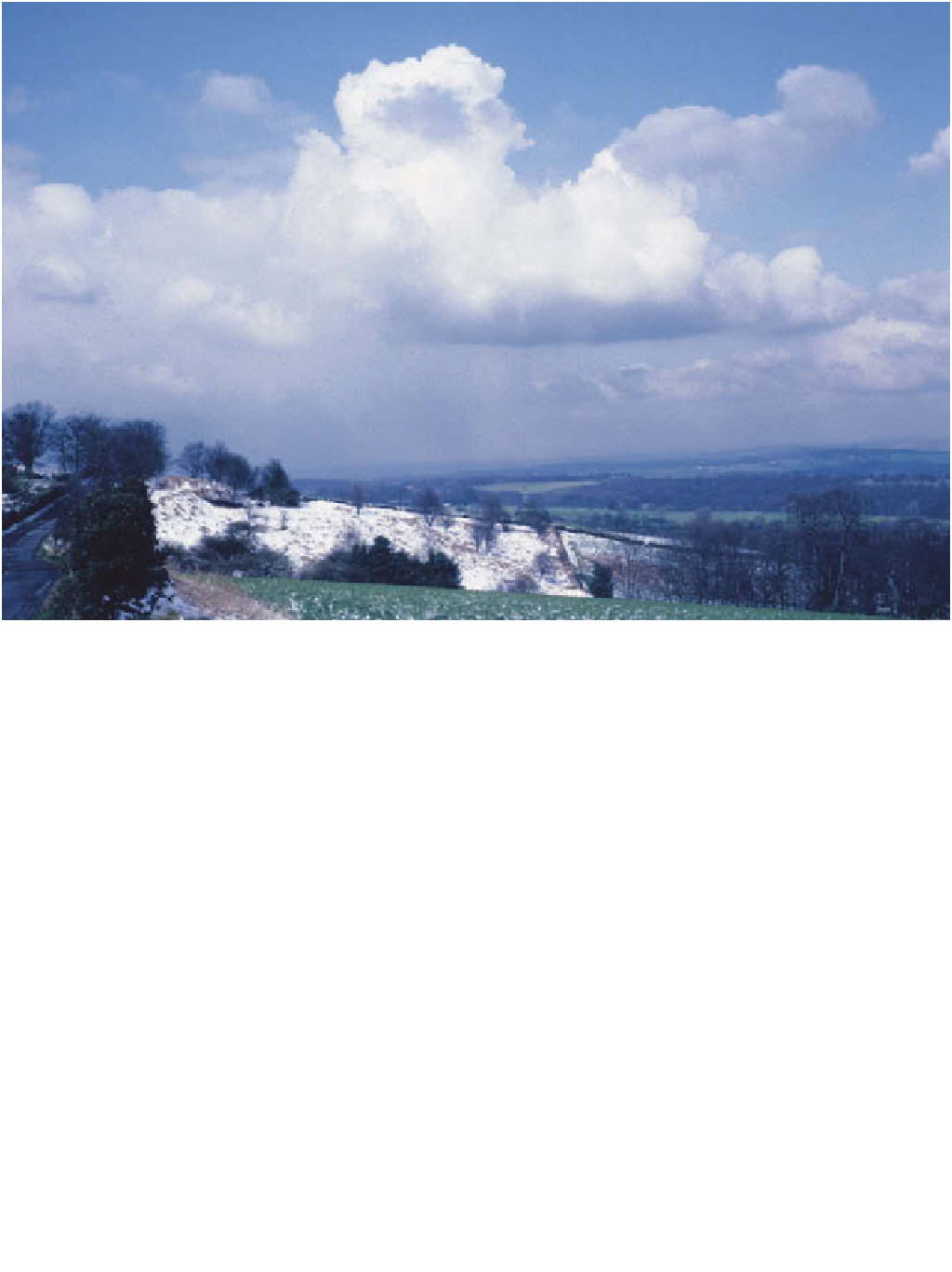Geoscience Reference
In-Depth Information
Plate 4.1
Cumulus clouds developing in a slightly unstable air flow. Individual turrets of rising saturated air can be seen.
Photo: Peter Smithson
or wet surfaces. Differences in slope angle may have the
same effect. But there is another factor that plays an
important role in these vertical air movements. It is the
vertical change in air temperature away from the ground
surface. It is known as the
environmental lapse rate
.
not constant, however, for it is affected by atmospheric
and surface conditions. When moist air is turbulent, or is
being mixed by strong winds, the environmental lapse
rate, at least in the lower layers of the atmosphere, is low,
perhaps 5
C/1,000 m; with strong surface heating, it is
steep, meaning that air temperature cools rapidly with
height and may reach 10
C/1,000 m or locally even more.
Under still, calm anticyclonic conditions temperatures
may even rise with height for short distances. Whatever
its value, this rate of temperature change greatly influences
air movement. On average, the environmental lapse rate
is about 6·4
C/1,000 m.
Environmental lapse rate
If we measured air temperatures in the troposphere at
different heights under cloudless conditions, we would
find that temperature usually falls with height. The reason
is quite simple. The incoming radiation is largely absorbed
at the surface, not in the atmosphere, so it is the surface
where most of the insolation is converted to heat. A small
proportion of this energy is transmitted downwards into
the soil by conduction but the majority is returned as
either sensible heat or long-wave radiation to heat the
atmosphere. Heating is greatest close to the ground surface
and declines with height.
The rate at which the temperature falls with increasing
altitude is called the environmental lapse rate (ELR). It is
Stability and instability
We can start to understand the importance of the
environmental lapse rate by considering a simple example.
Imagine local heating of the air above an island in the
sea. The island, because it converts sunlight to heat
more effectively than the surrounding water, will act as a
thermal source. Air in contact with this source will be









































